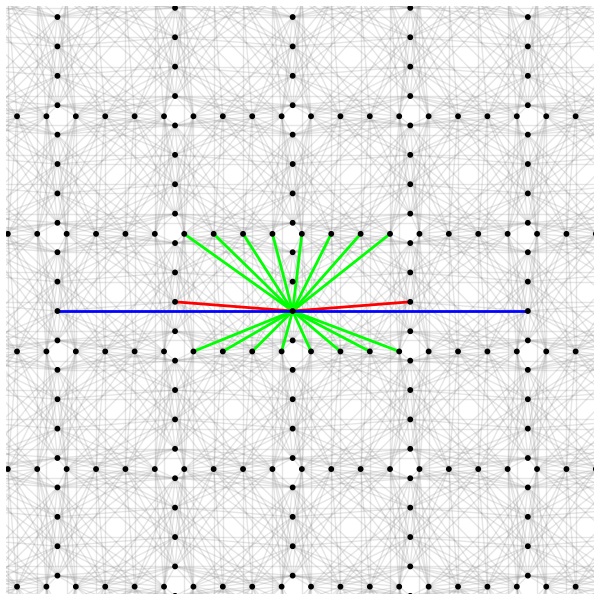It's not a complete system that will have 7,000 qubits when it islaunched in 2023 or 2024 and a small
With Zephyr topology, each qubit will beconnected to 20 other qubits, up from 15 in the company's previous Pegasus family computer, which uses the current 5,000 qubit Advantage system.
 Cropped view of Zephyr topology with onerepresentative qubit (black dot) connected to orthogonal qubits by 16 inner connectors (green lines) and to similarly aligned qubits by two outer connectors (blue lines) and two odd connectors (red lines)
Cropped view of Zephyr topology with onerepresentative qubit (black dot) connected to orthogonal qubits by 16 inner connectors (green lines) and to similarly aligned qubits by two outer connectors (blue lines) and two odd connectors (red lines)
“The Advantage2 prototype is designed toshare your knowledge and receive feedback from the community as we continue to work on building the complete Advantage2 system,” said Emil Hoskinson, director of Quantum Annealing Products, D-Wave. “Our current Advantage quantum computer has been completely redesigned from the ground up. With Advantage2, we are once again pushing the envelope, demonstrating that connectivity and noise reduction will be the delivery vehicle for even greater performance once the complete system is available.”
The company claims that by making a new prototypeAdvantage2 available, developers will be able to start testing all major features of the full scale model. D-Wave notes that its early benchmarking shows that the Advantage2 system has improved coherence and reduced qubit noise.
The new prototype is now available via quantumD-Wave Leap cloud service, which includes access to the original Advantage system as well as D-Wave quantum hybrid solvers, including the new Constrained Quadratic Model solver.
Read more
The Japanese dumped a giant turbine into the ocean to get endless energy from the current.
Astronomers from Japan have found an unknown structure in the galaxy
Researchers filmed a 'hidden' ecosystem in an Antarctic river